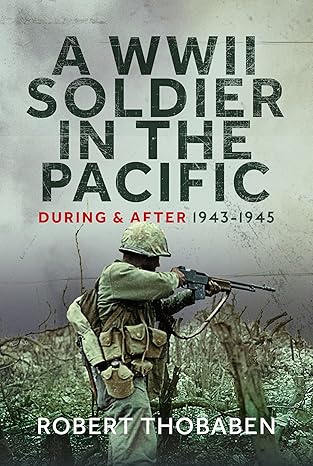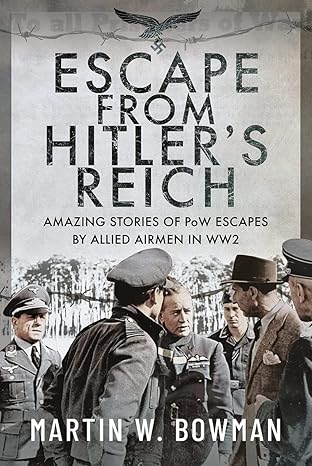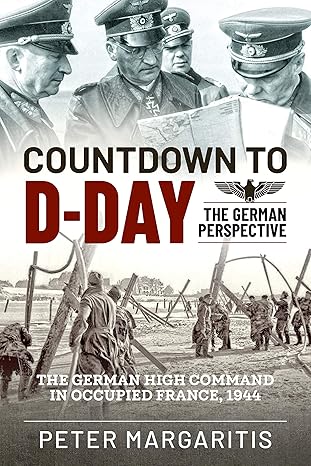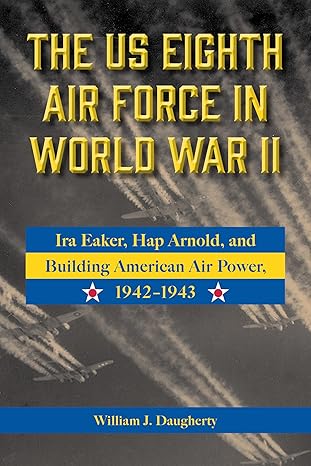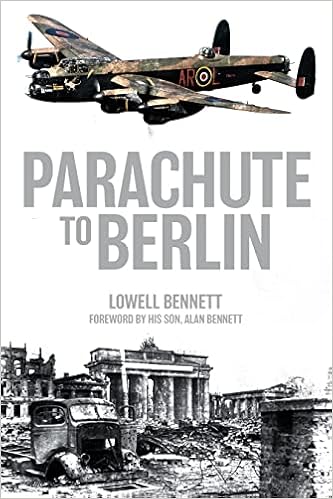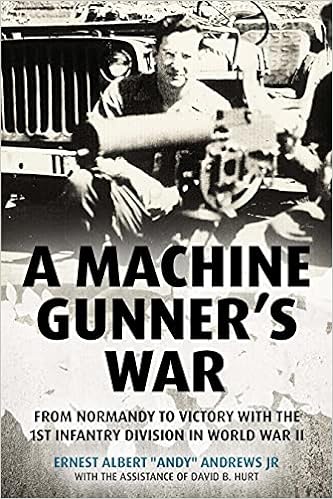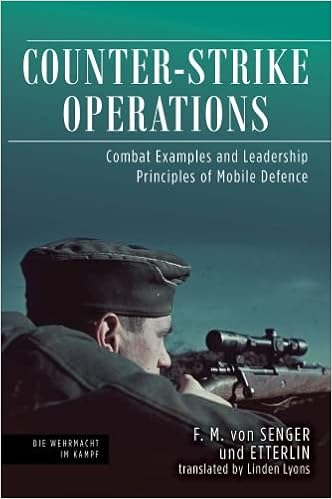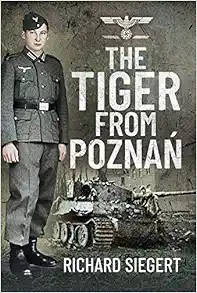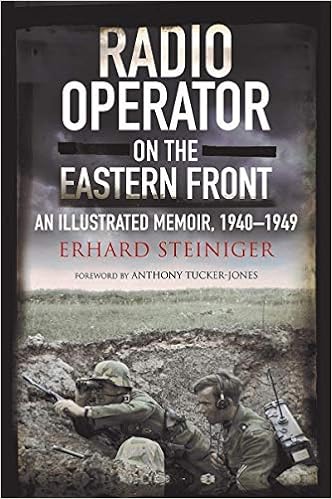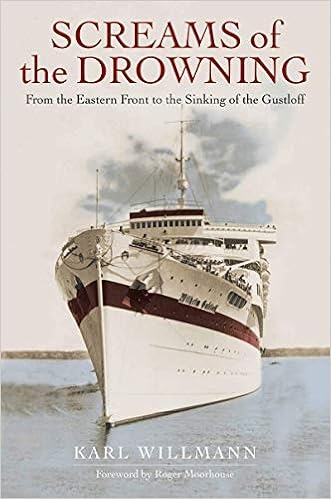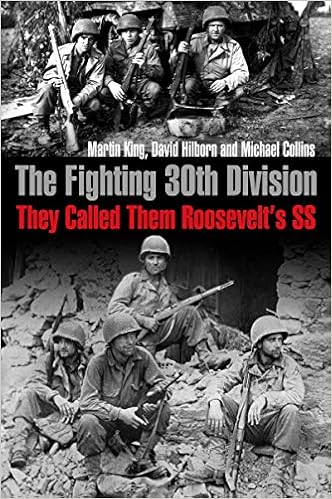Operation Compass 1940: Total victory for the British
By Roger Daene
American General George S. Patton once said that you always attack and never let your enemy rest. ("Quote Fancy", n.d.) That was also the motto of his adversary German Field Marshall Erwin Rommel. Rommel would make his name in France 1940 by living out that old maxim of war. His career and legend would begin to soar in North Africa when he arrived in March of 1941. Against incredible odds and harsh conditions, Rommel would prove again and again that an enemy can never be allowed to rest. However, he was not the first to demonstrate that maxim to be true. Before his arrival, British Generals Archibald Wavell and Richard O'Connor would face tilted odds in North Africa. Their offense began as a local operation to recapture some areas taken by the Italians in the opening months of the war and to push them back to Libya. It ended with nearly all of Libya captured and less than 20,000 Italians escaping out of 150,000. 30,000 British, Indian and Australian soldiers never let the enemy rest.
On June 10th, 1940 Italy declared war on both France and Great Britain. France surrendered after the sledgehammer blows of the Germans in just six weeks and shortly after Italy's entrance into the war. The fall of France empowered Mussolini to believe that he could conquer areas he sought because with France out of the war and Great Britain defending their homeland. This would leave their colonies open to Italian conquest. Italy sought to control Egypt and the valuable oil resources of the area. With France out of the war, British convoys would either sail past Gibraltar and then through the Italian controlled Mediterranean. Their only alternative was to take the much longer route around the Cape of Good Hope and around the eastern coastline of Africa.
While Mussolini planned for expanding the power and influence of Italy, Great Britain determined their priorities. The British Isles had to be defended and would, naturally, receive the dominate share of all supplies. The oil fields in Egypt and beyond into the Middle East, were considered critical to the defense of Great Britain. British forces in Egypt would be kept on the defensive but could carry out local attacks as deemed necessary.
Field Marshal Sir Archibald Wavell was given command of the entire North African and Middle Eastern area of operation in the summer of 1939. His areas of responsibility stretch from Egypt, Sudan, Palestine and the Trans-Jordan area for a total of nine countries on two continents. Prior to this command, Wavell had served in the Great War on the Western Front where he lost his left eye at the Second Battle of Ypres. After the war, he served in several places, but in 1937 he found himself assigned to Palestine to deal with the unrest there. [1]
The British 7th armored and the 4th Indian divisions formed the backbone of Wavell's defense of this immense area. According to "Warfare History Network" (n.d.), "A summary of Wavell's order of battle read, ‘twenty-one infantry battalions, two regiments of horsed cavalry, four regiments of artillery with sixty-four field guns, forty-eight anti-tank guns, and eight anti-aircraft guns.'" [2]
General Richard O'Connor commanded the Western Desert Force at the outbreak of hostilities. He too had seen extensive combat on the Western Front in the Great War. O'Connor would lead the newly formed 7th armored and 4th Indian divisions in the opening months of the Desert war. These two divisions consisted of many long-term professional soldiers and had trained together for several years. (Before becoming an armored division, the 7th had been known as the Mobile Division.) O'Connor said that these two divisions, the 4th Indian and 7th armored were two of the finest trained divisions he had ever commanded. [3]
The Royal Navy and Royal Air Force supported General O'Connor. Air Commodore Raymond Collishaw was the commander of 202 Group RAF. The Canadian Collishaw was a Great War ace and kept that fighter pilot mentality as commanded the planes under his command. His three fighter squadrons consisted of 63 Gladiator fighter planes and one Hurricane fighter. 72 Blenheim bombers were divided amongst six bomber squadrons (In the early months of the war, this one Hurricane fighter was known as "Collie's battleship". Collishaw moved this plane around to various air bases to make the Italians believe there were more Hurricanes than there were. The Hurricane was vastly superior in all aspects to anything the Italians had at this point in the war.) [4]
For the British to keep these planes supplied and maintained, supplies had to be brought through areas actively patrolled by U-boat and within reach of both German and Italian aircraft. Planes and transports could be flown from Great Britain where they would refuel in either Gibraltar or Malta and then on to Egypt. Despite the additional wear and maintenance needs of British aircraft, their supply system was up to the task and kept the British air units nearly fully operational at all time.
The Italian 5th Squadra, commanded by Generale Squadra AereaFelice Porro, had nearly 200 bombers and 200 fighter planes. Italian bases in Italy could supply additional reinforcements as needed. The Italians also had the option of launching a massive bomber strike against Alexandria and the port facilities. Despite these numbers, the Italian supply and maintenance system was not up to the task. At the start of the campaign, only 60 percent of Italian aircraft were available. The rest awaited spare parts. The number of available aircraft continued to drop throughout the opening campaign due to the inadequate supply system. [5]
The full effects of an inadequate supply system was seen at the end of the campaign. The Italians left 1,100 aircraft of all types of airfields due to the lack of spare parts. Combat claimed 58 planes and the British captured 91 captured intact. [6]
The Italians had a numerical advantage when it came to ground troops as well. Marshal Rodolfo Graziani commanded the Italian 10th Army in Libya. The 10th had a strength of about 150,000 men divided into ten divisions. The Italians called Graziani the "Pacifier of Libya," but to the Libyans, he was a mass murderer. Thousands of Libyans starved to death in concentration like camps establish by Graziani. He took command after the death of Marshal Italo Balbo who was killed on June 28th, 1940 when his SM79 bomber was flying over the port city of Tobruk and attempting to land by anti-aircraft units. The port was under attack by British bombers. His plane crashed, killing all aboard. [7]
Benito Mussolini saw Graziani as the best general he had and boasted that he would tame the British as he had tamed the Libyans. One can only imagine the effect on overall Italian morale when their "greatest" general was tamed by the British. [8]
While the Italians had declared war against Great Britain on June 10th, Italian air units did not launch any massive strikes against British air bases. The British struck the first air operation in the war against Italy on June 11 when three British bomber squadrons bombed Tobruk. Finding no visible signs of the enemy there, attacked the secondary target of El Adem. They neatly organized into rows Italian aircraft and promptly destroyed the airfield and many aircraft. It was not until June 21st that Italy launched its' first air operation against the British which was mostly ineffective. [9]
The early setbacks by the Italians in the air helped to cause some demoralization amongst the Italian units of the 10th Army. Although outnumbered numerically, British air units continued offensive operations against both Italian airfields, supply convoys, and forward units. This had a twofold benefit. First, the Italian commander of the air units, General Felice Porro kept Italian planes airborne at all time over bases and ports to defend them against any British attack. [10]
The already overstrained and under-equipped Italian logistics could not keep up with the wear and tear on the planes and Italian air strength eroded quickly. Second, Italian air units were not as available for reconnaissance or attacks on British units. Consequently, the Italians lacked the eyes and ears and close support that the British would enjoy when they launched a counterattack against Italian ground forces.
Despite early setbacks in the air war, Italian morale remained high. The delay in their attack into Egypt was not due to poor morale but a need to shift troops. Many Italian troops had been stationed in western Libya due to the threat posed by French in Tunisia, Algeria, and Morocco. With the fall of France, Italian troops crossed great distances and established new supply dumps in eastern Libya. On September 13th, Italian forces crossed the Egyptian border and advanced nearly 50 miles. They halted near Sidi Barrani and established fortified camps to prepare the invasion of the rest of Egypt. The British were caught off guard because they thought that any attack would be preceded by increased radio traffic. When it was not, the British were not as prepared as they wanted to be. Aggressive patrolling by the British 11th Hussars (an armored car equipped unit) resulted in the capture of the Italian 10th Army Engineer General in Chief with complete plans for defenses of Bardia. This would greatly aid the British when they took this important place. [11]
The Italians built several fortified camps. To the north were the camps of Nibeiwa, the Tummars, and Point 90 stretching toward the 48 coast at Maktila. Again, it was the 11th Hussars, who found a gap south of Bir Ebna. This 20-mile gap did not appear to be patrolled by the Italians. [12]
Generals Wavell and O'Connor planned their counter-attack which would be known as Operation Compass. The operation would consist of three phases. Phase one would be conducted by the 4th Indian and supported by the 7th Royal Tank Regiment (RTR) from the 7th Armored. The 7th RTR contained one battalion of Matilda tanks. In May 1940, a force of British Matilda tanks nearly broke through Rommel's 7th Panzer Division but was only stopped by the use of heavy 88mm anti-aircraft guns. Matildas boasted a respectable 40mm main gun. The front armor of 78 mm could stop all Italian anti-tank rounds and most Italian artillery fire. These lumbering beasts even going a maximum of 15 mph was no match for anything the Italians had. They would prove to the decisive weapon in the upcoming counterattack. [13]
The Italians were not entirely unaware of the buildup of the British forces. From Egypt came intelligence that the British were indeed building up forces. Some of the reports were very accurate while some of them were ridiculous. The overall impression was that the British were planning an offensive operation. [14]
The 4th Indian and 7th RTR would exploit the 20-mile gap near Bir Ebna. Once through, Nibeiwa, Tummar East, and Point 90 camps would be taken from the rear. The primary role of the 7th RTR was to prevent the 4th Indian from being in turn outflanked from any Italian forces in the coastal town of Buq Buq which was on the coastal road connecting Sidi Barrani to Sollum, another small port facility to the west. Shelby Force, a mixture of various British units such as the garrison from Mersa Matruh under General Shelby, would attack towards Maktila. Th Royal Navy supported the attacks of the 4th Indian and 7th RTR and Shelby force. The Royal Air Force (RAF) would provide ground support and keep the Italians from knowing where the various attacking columns were heading. The second phase of the operation would send the 4th Indian to capture Sidi Barrani and the 7th armored towards Buq Buq. [15]
(A useful map to look at can be found at https://en.wikipedia.org/wiki/Italian_invasion_of_Egypt#/media/File:WesternDesertBattle_Area1941_en.svg).
The North African campaign was, in many ways, determined by the side who could win the logistics war. The army that could keep forward supply dumps supplied and protected and moving along the vulnerable coast road would be the winning side. The harsh conditions of fine sand and heat meant that the vehicle recovery and repair units need to be efficient always. Broken down tanks and vehicles required maintenance and even damaged tanks could be back into action in a day or two if the logistics held up. The British had the clear advantage here. Another key to desert warfare is mobility. The British Western Desert Force was a mobile one, and the Italian 10th Army's infantry was for the most part, not mobilized. Mobility would be a critical factor in the British getting to Beda Fomm at the end of Operation Compass. As Italian garrisons surrendered with intact trucks and supply dumps, the British were able to replace or mobilize units that needed transportation.
At this point in the desert war, it was a matter of hand to mouth supply. Captured Italian supply dumps and trucks helped to alleviate the supply issues but at times, British units were reduced to half a gallon of water per day. One of the constant supply questions was to understand what would be needed at any time. For instance, a unit might need ammunition and arriving fuel supplies could not meet that need. It is not until the fighting dies down and supply dumps established can the day to day needs be met. [16]
Operation Compass began on December 9th. British artillery bombarded the Italian camp at Nibeiwa from the east for an hour. Believing the attack was coming from the east, the Italians reinforced the eastern edge by moving troops from the western edge. They were surprised when Indians from the 11th Brigade of the 4th Indian Division attacked from the northwest, supported by the 7th RTR. The camps fell soon after the Italian commanding General Maletti was killed. Over 2,000 Italians and a large well-equipped supply dump was captured. British losses were less than 60. [17]
The significance of the fall of this fortified base was that Maletti's force comprised the one semi motorized and armored force available to General Berti of the 10th Army. Half of the nearly 70 or so tanks were the light machine-gun-armed Fiat L3 tankette and the other half were the so-called medium M11/39. The M11 had a hull-mounted 37 mm gun. Both types were useless in any fight against the tanks of the 7th RTR. [18]
It is easy to say the Italians were poor soldiers or could not fight. They were not aware they had been outflanked and they lost their general. Many a battle in history has been lost when similar things happen so the fighting spirit of the Italians need not be impugned because of surrenders like this. The British would surrender a very large garrison to a smaller attacking Japanese army when the British were outflanked. [19]
The Indian 5th Infantry Brigade captured Tummars a few hours later. The 4th Indian, supported by the 7th RTR attacked Sidi Barrini in phase two of the operation. The 4th Black Shirt infantry division surrendered en masse when Sidi Barrini fell on the evening of December 11th. Shelby Force moved to attack Italian 1st Libyan Colonial Infantry Division at Maktila but the Colonial Division was able to briefly escape until, it too, was captured on December 11th. The so-called "Battle of the Camps" continued from December 8th to the 11th. The British captured about 38,000 Italian and Colonial troops and captured or destroyed 237 artillery pieces and 73 medium tanks. [20]
The first part of Operation Compass was complete and by any definition, it was an overwhelming British victory. Many generals would have been content with the victory, the number of destroyed and captured enemy and the great loss of supplies and material the enemy had suffered. At this point too, the 4th Indian Division was suddenly withdrawn by General Wavell to reinforce the British in the Sudan. The inexperienced 6th Australian Infantry Division was hardly a worthy replacement for the 4th Indian. General O'Connor was not like other generals and he did not want to give the Italians to rest. While the 6th Australian was not an experienced division they did not lack in enthusiasm. In their thinking, they were torchbearers the first Australian Imperial Force of the Great War. They only fielded two of the three artillery regiments and lacked an anti-tank regiment and machinegun battalion. In addition, they lacked many transport vehicles. [21]
O'Connor continue pursuing the retreating Italians and by December 15th, Sollum and Halfaya Pass were captured and all of Egypt was now in British hands. The Italian Fort Capuzzo in Libya was also quickly taken. The capture of Sollum was important because it was a port. Although not a major port, it allowed the British to land supplies. It only had two small landing piers and was incapable of landing heavy equipment or reinforcements. The capture of Sollum allowed the British to land food, water, and petrol. The capture of Fort Capuzzo with its' large water tanks intact proved to be less of an advantage as the water that fed these tanks from Bardia were found to heavily polluted with salt. [22]
The Port facilities at Sollum were increased. At the middle of January, 350 tons a day could be unloaded and by the end of the month, this was increased to 500 tons. 3,000 prisoners could be removed daily and this also allowed British and Australian casualties to be removed. [23]
The next major Italian position was in the coastal town of Bardia. The British badly underestimated the strength of the Italians at only about 20,000 with no tanks. The Italian Lieutenant General Annibale Bergonzoli's had nearly 40,000 men from four different divisions. He also had nearly 400 guns supporting his troops in the forward positions. and had some of the newer M13/40 tanks which had just arrived at the front. These tanks were a marked improvement over the hull mounted M11/39 as the M13 had a turret mounted 47mm gun. These tanks were a match for the lighter British tanks of the 7th Armored but were no match for the Matilda. The M13/40 tanks were dug in and formed part of the nearly 18 mile perimeter whose main defense line consisted of tank ditch and concrete sangars. Sangars are like concrete sandbags put into a position where the terrain is too hard for the digging of trenches. On January 3rd, the Australians began their assault. The Italians fought but steadily gave ground. By the end of January 5th, 1,000 Italians lay dead and 3,000 were wounded. A total of 36,000 Italians were taken prisoner but a few thousand, along with General Bergonzoli escaped. The Australians suffered 130 killed and 326 wounded. [24]
The British 7th Armored and the Australian 6th Infantry continued their advance around the hump of Cyrenaica (Libya) and by January 9th surrounded nearly 25,000 Italian troops under General Petassi Manella in the port city of Tobruk. By January 21st, the British and Australians were ready for their assault. A massive artillery barrage preceded the attack by the Australian infantry. The 7th Armored was kept out of the attack as they were needed for pursuit along the rest of the coastline of Cyrenaica. The 7th Armored was to resume the advance as soon as Tobruk fell. [25]
Dug in Italian tanks formed the core of many Italian strongpoints and were dealt with one at a time. By nightfall, the British offered a ceasefire. About the same time, the Italian Air Force launched a large-scale surprise bombing raid. By coming in low, they surprised the Australians. Unfortunately for the Italians, the bombs fell into an area where several thousand Italian prisoners were being kept. Hundreds were casualties and little damage was done to the Australians (Chen, n.d.). Tobruk fell on January 22nd. 25,000 Italian prisoners were taken, 208 guns, 78 tanks. The Australian losses were about 400. [26]
The next major Italian force lay at Derna, 140 kilometers away to the west from Tobruk. Two regiments of the Italian 60th Sabratha Division defended Derna and another regiment of the 60th defended Mechili, 40 miles away. They were also supported by two battalion of M13/40 tanks. The Australians clashed with the Derna force while the 4th Armored Brigade of the 7th Armored Division fought the Italian tanks at Mechili. [27]
The two Italian medium tank battalions were from the nearly organized Italian Special Armoured Brigade. In their first action under the command of General Valentino Babini; the Italians lost 9 tanks compared to 7 British tanks (Chen, n.d.). The Italian infantry and tanks were able to successfully disengage from Mechili and the Australians were able to prevent them from linking up with the infantry force at Derna. With the Sabratha Division and the armored force under Babini stopped from advancing up the coastal road, the Italians chose to fall back to prevent from getting encircled.
The 7th Armored was nearing exhaustion as wear and tear and battle losses dropped their effective strength to 50 cruisers (British term for medium tanks). [28] O'Connor faced supply problems as he needed to reestablish some forward supply bases and give his tanks crews the required time for resupply and maintenance work. He organized the armored brigades of the 7 Armored by stripping the best units from the 7th Armored Brigade and assigning them to the 4th Armored Brigade and re-equip the 7th Armored Brigade with units from the 2nd Armored Division which was just arriving in Egypt. [29]
O'Connor could choose to await reinforcements and resupply since both mechanically and physically speaking, his units were exhausted. If the Australians could keep up the pressure by following the retreating Italians along the coastal road as they retreated from Benghazi and if the reorganized 7th Armored cross the hump of Cyrenaica and make it to the Gulf of Sirte before the Italians, he had the potential of catching the remnants of the 10th Italian Army in a trap. Here is where motorized troops had a distinct advantage. They could use the trails thru the desert whereas foot-borne troops cound not. O'Connor dispatched the 7th Armored Division towards the desert fort of Msus and then towards the coast. At Beda Fomm, he hoped to bag the remnants of the Italian 10th Army.
The Australians had to follow the coastal road following the Italians since they gave most of their motor transport to the 7th Armored Division's trek across the desert. The Australians kept close to the Italians, and this forced the Graziani to keep his tanks in the rearguard to delay the Australians rather than spearheading their way down the coastal road and keeping the retreat route open. [30]
The British tankers, armored cars and weary infantry began the trek across the desert. The 11th Hussars once again led the way followed by the tanks of three depleted armored regiments. 2nd Battalion of the British Rifle Regiment and the 4th Royal Artillery travelled with the 11th Hussars. This forward force of the 7th Armored was known as Combe Force, after its commander, Lt. Col. John Combe of the 11th Hussars. This advance force of 2,000 men arrived at the small town of Beda Fomm; a mere 30 minutes before the lead elements of the Italian 10th Army. [31]
The British did not have the time to deploy properly or to fortify any positions by the time the Italians arrived. Machine gun and artillery fire from quickly deployed guns brought the advancing column of Italians to a halt.
There are 14 miles between Beda Fomm and the sea with control of the coastal road being the key to survival for both sides. The firm sand dotted the area and a few knolls dotted the country side. Ridges ran north to south. The lynchpin to keeping the road open is a small hill known as "the Pimple". The side that held the "Pimple" would determine the fate of the remnants of the 10th Army. [32]
With the arrival of the 2nd Royal Tank Regiment, Combe Force moved South to block the coastal road there. The 2nd RTR moved to defend the Pimple. 19 medium tanks and seven light tanks are all that stood in the way of the approximately 25,000 men of the 10th Italian Army from reaching the safety of Tripoli. Further to the north, the 7th Hussars with one medium tank 29 light tanks harassed the flanks of the Italian forces on the coastal road. The Italians had medium tanks spread along the coast road which made it difficult for the machinegun armed British light tanks from harassing the road. Even when life is made difficult for the British, they still gave their best to harass and retreat as needed. The Italians on the road constantly feared tank attack. [33]
The men of Combe Force were not in an ideal situation. Cyril Joly, a British tank officer, wrote about the fighting. "Each of us knew by what slim margin we still held dominance over the battlefield. Our threat was but a facade – behind us there were no more reserves of further troops. Even the supplies of the very sinews which could keep us going had almost run out. If we lost now, we were faced with the capture or a hopeless retreat into the empty distances of the inner desert. It was a sobering thought. I felt that the day, with all its black, wet dullness, was heavy with ominous foreboding. The scene before me was made gloomy enough to match my mood by the black clouds of acrid smoke which shrouded the battlefield like a brooding pall." [34]
Italian medium tanks of the Italian Special Armored Brigade attempted the final breakout on February 7th. The grit of these tankers cannot be questioned as they broke through the first line of Allied infantry. The guns of the Royal Artillery stopped them by the headquarters. The Italians had come within yards of effecting a breakout. This was the final hurrah of the Italian 10th Army as it surrendered. The British captured Generals Babini and Bergonzoli. O'Connor dispatched the 11th Hussars regiment toward Agedabia and El Agheila further to the west. Some Italians had slipped around the British blocking force at Beda Fomm, and O'Connor wanted these too to join those heading towards prisoner of war camps. [35] When El Agheila was captured, Operation Compass ended. The British advance too ended as troops were needed to be sent to Greece instead of mopping up the remnants of the Italian army at Tripoli. Marshall Graziani abandoned his troops at Beda Fomm and made it safely to Tripoli. He was recalled to Italy in February 1941 and would not see another combat command throughout the war. [36]
The end of the operation ended with the destruction of the Italian 10th Army. As a force, it ceased to exist. The 60th Infantry Division Sabratha, which had fought the Australians to a standstill at Derna was caught up in the retreat to Beda Fomm. Several thousand did escape the encirclement and made it to Tripoli. The division would be rebuilt and would see commendable service later at Gazala and El Alamein.
The British suffered approximately 500 dead and 1,300 wounded. For those sacrifices, they captured about 133,000 Italians, 420 tanks, and about 850 guns (Bierworth, 1976).The 6th Australian would be sent to Greece after Operation Compass ended. The 7th armored would be reinforced and the 4th Indian would again be assigned to 13th Corps, as the Western Desert Force had now become. The 7th armored would be known as the “Desert Rats” and that title would also be given to the 9th Australian Division for their tenacious defense of Tobruk in 1941. General O’Connor would be captured in April 1941 by a German patrol. He would spend the next 2 ½ years in an Italian prisoner of war camps. He attempted five escapes and was finally successful in December 1943. He would later command British VII Corps in the Normandy landings and campaign. [37]
The collapse of the Italian army was due to many factors and were not really solved until after the war had ended. While this paper cannot get into every reason, there are a few noteworthy ones that warrant some attention. The problem began at the top of the Italian military. Since military service was not seen as “prestigious”, the Italian military did not draw the best of Italian society. Combine this with the fact that rank, promotion, and assignment was often based on seniority rather than the skill of the individual. This led to many colonels leading troops in their 50s and divisional commander in their 60s. Command was often based on the fascist fervor of the officer and not skill. Lastly, the higher command of the Italian military did not prepare the strategic or operational goals of the campaign for which they were about to embark upon. One need only to look at the opening advance into Egypt for examples of this lack of planning. Italian forces stopped just 95 kilometers into Egypt and then dug in and prepared fortified positions. They needed the time to move their supply dumps closer. The command had not worked through what they would do once they advanced. [38]
Military doctrine was outdated and better suited for the Great War. For instance, the infantry was the basic building block of the division and armor was meant to support the infantry’s advance. Thus, Italy developed support weapons for the infantry and left their armor development behind their European counterparts. For instance, Italian tanks were slow compared to the British tanks. The reason for this simple. Speed is not needed because the infantry did not armor to go ahead of them and rupture the enemy line. The armor needed to keep up with the infantry. There appears to have been a great concern for the number of guns supporting the infantry but many of the guns in the artillery were of WW1 design and lacked the range, for the most part, compared to British artillery. The presumed dominance of the infantry could be seen in Mussolini’s braggard statement about having 8 million bayonets. Great Britain and Germany would talk about number of tanks and aircraft. The Italians would develop motorized units and armored units but these were later developments. Armored units like the Ariete armored division fought well on several occasions. The Ariete was formed in 1939 which stunted its’ training and development and initially they let Rommel down several times until they gained experience. It should not be forgotten that the Ariete fought until all its’ tanks were destroyed at El Alamein. The last charge of the Ariete helped to stall the British advance to allow many other German and Italian troops to escape. [39]
Consequently, the Italians believed in quantity over quality. This helps to explain the poor showing of Italian troops at Bardia and the British advance to Bardia for instance. The Blackshirt divisions fared very poorly. While they were fascist zealots, they were not any better trained than their counterparts in the infantry. In comparison, the German Waffen SS was the elite of the German military. Initially their training was at a much higher standard, they received the best equipment and best officers. They were devoted Nazis and they were (for the most part) better soldiers than their Wehrmacht infantry counterparts. (While I am fully aware of the SS atrocities, my comments are about their battlefield capabilities only.)
Italian headquarter, administrative and support units saw their role very differently than the opponents they would face. In the British, Australian, and Indian units the headquarters saw their role as directly from the front and being fully able to aid in the attack or defense. The Italian headquarters saw their role as directing from the rear, much like the Great War model where headquarters awaited reports from the front-line trenches and then reacted to the news by dispatching or recalling units. Thus the headquarters, administrative units and support troops were not expected to fight. This helps to explain that once the Australians broke through the primary defense lines, large number of troops surrendered. They surrendered because they were trained to or expected to fight. [40]
Lastly, while the British and the Germans to a lesser extent, were still mastering the idea the three services working together, the Italian branches of the military worked independent of one another. For example, Italian air units did not want to support the ground troops in fear that would make them subordinate to the Army. The navy worked independent of the other three branches for the most part. The Italian Air Force did not support naval operations to any degree comparable to the British cooperation between the navy and air units. [41]
When these various deficiencies are added up, one can easily see why the Italian military collapsed as it did in 1940. The common Italian solider and artillery gunners were brave and could hold their ground when they had good leaders. On numerous occasions, Italian artillerymen died at their guns and fired until they were overrun. The Italian Special Armored Brigade fought hard at the end of the campaign and if they had better infantry support, they might have broken the British encirclement at Beda Fomm. The many deficiencies, especially in the higher command and outdated equipment, let the common Italian soldiers down and they paid the price for it.
The author of this article is Roger Daene. I am an online instructor for the University of Phoenix teaching American history. I can be reached at Tobruk1942@yahoo.com
| * * * |
Show Notes
Footnotes
[1]. ("History Of War", n.d.).
[2]. (The Forgotten Victor’s Army: The Western Desert Force).
[3]. (Bierworth, 1976).
[4]. (Bechthold, 2017)
[5]. (Bechthold, 2017)
[6]. (Bechthold, 2011).
[7]. ("Fam People", n.d).
[8]. ("New Wars Rss", 2009).
[9]. (Bechthold, 2011).
[10]. (Bechthold, 2011).
[11]. (Bierworth, 1976).
[12]. (Bierworth, 1976).
[13]. ("Tank Encyclopedia", 2014)
[14]. (Playfair, 1954).
[15]. (Bierworth, 1976).
[16]. (Playfair, 1954).
[17]. (Chen, n.d.).
[18]. (Diamond, 1916).
[19]. (Chen, n.d.).
[20]. (Chen, n.d.).
[21]. (Playfair, 1954).
[22]. (Playfair, 1954).
[23]. (Playfair, 1954).
[24]. (Chen, n.d.).
[25]. (Bierworth, 1976).
[26]. (Bierworth, 1976).
[27]. (Bierworth, 1976).
[28]. (Bierworth, 1976).
[29]. (Bierworth, 1976).
[30]. (Bierworth, 1976).
[31]. (Diamond, 1916).
[32]. (Playfair, 1954).
[33]. (Playfair, 1954).
[34]. (Today World War Two (n.d.)
[35]. (Chen, n.d.).
[36]. ("New Wars Rss", 2009).
[37]. (Chen n.d.).
[38]. (Bechthold, 2011).
[39]. (Bechthold, 2011).
[40]. (Bechthold, 2011).
[41]. (Bechthold, 2011).
References
Quote Fancy. (n.d.). Retrieved from https://quotefancy.com/quote/815457/George-S-Patton-Jr-Attack-rapidly-ruthlessly-viciously-without-rest-however-tired-and.
History of War. (n.d.). Retrieved from http://www.historyofwar.org/articles/people_wavell.html.
Warfare History Network. (n.d.). Retrieved from http://warfarehistorynetwork.com/daily/wwii/operation-compass-masterstroke-in-the-desert/.
Bechthold, M. (2017). Flying to Victory: Raymond Collishaw and the Western Desert Campaign, 1940–1941. Oklahoma City, OK: University of Oklahoma Press.
Bechthold, M. (2011, Fall). A Stepping Stone to Success: Operation Battleaxe (June 1941) and the Development of the British Tactical Air Doctrine . Journal of Military and Strategic Studies, 14(1), 1-21.
Bierworth, J. G. (1976). Beda Fomm: An Operational Analysis. Retrieved from http://www.dtic.mil/dtic/tr/fulltext/u2/a284686.pdf".
Chen, C. P. (n.d.). World War Two Database. Retrieved from https://ww2db.com/battle_spec.php?battle_id=1.
Diamond, J. (n.d.). Warfare History Network. Retrieved from http://warfarehistorynetwork.com/daily/wwii/operation-compass-masterstroke-in-the-desert/.
Fam People. (n.d). Retrieved from http://www.fampeople.com/cat-italo-balbo_4.
New Wars RSS. (2009). Retrieved from https://newwars.wordpress.com/2009/02/07/beda-fomm-britains-forgotten-triumph-2/.
Playfair, L.S.O. (1954). The Mediterranean and Middle East: Volume I The Early Successes Against Italy (To May 1941) . London, UK: https://play.google.com/books/reader?id=Oo5vCwAAQBAJ&printsec=frontcover&output=reader&hl=en&pg=GBS.PA28-IA145.w.1.0.
Stockings, C. (2011, Fall). Something is wrong with our army…’ Command, Leadership & Italian Military Failure in the First Libyan Campaign, 1940-41. Journal of Military and Strategic Studies, 14 (1), 1-21.
Tank Encyclopedia. (2014). Retrieved from http://www.tanks-encyclopedia.com/ww2/gb/Infantry_Tank_Matilda_II.php.
| * * * |
© 2026 LtCol Rich Beil USMC (Ret.)
Written by LtCol Richard Beil USMC (Ret.).
About the author:
LtCol Rich Beil served 30 years in the Marine Corps, as an enlisted Infantryman and as an Artillery officer. Following his retirement, he obtained a Masters degree and taught American History for Ranger and Central Texas Colleges. He is a member of the International Society for the Scholarship of Teaching and Learning in History.
* Views expressed by contributors are their own and do not necessarily represent those of MilitaryHistoryOnline.com.

